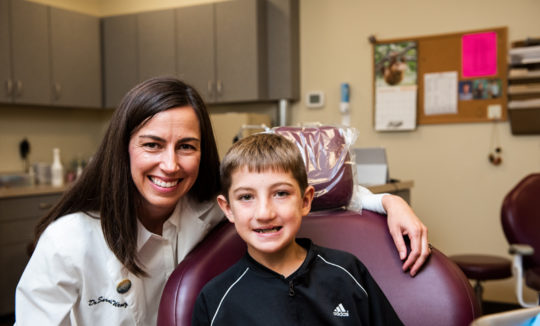Orthodontics
Orthodontics
The first time your child visits the orthodontic department will likely be around age 6. A full series of records, including x-rays and photos, are taken to obtain an initial diagnosis of growth patterns and the permanent dentition. It is quite common for kids with a cleft to have missing teeth, malformed or malpositioned teeth, and bite problems such as underbites and crossbites. The orthodontic team and the surgical team will work together to decide the best timing for alveolar bone grafting, a procedure sometimes done in conjunction with orthodontics, usually between the ages of 6-10.
 COMMON SERVICES
COMMON SERVICES
Common early treatments include palatal expanders, braces on the upper teeth, and space maintainers. Most kids with a cleft need early treatment (Phase I) to start to expand the constricted upper jaw and align the front teeth. Phase II is in the adult, or permanent dentition, and usually includes full braces and rubber bands to help in bite correction. It is also not uncommon for some patients to require a final surgery, performed by their team surgeon, to advance the upper or lower jaw which corrects the bite. This surgery requires braces to be on, and the orthodontic team works closely with the surgeon in preparing for this procedure.
“Because the orthodontic care is done on site, at the same facility that the team care takes place, the continuity of care is exceptional. The communication that the orthodontic team has with the surgeons and the other dental and speech team members is very unique, and ultimately serves to give the patients the best possible care and outcomes.” Dr. Sarah Wentzel
FREQUENCY OF APPOINTMENTS
Once in treatment, patients are typically seen at 4-8 week intervals.
